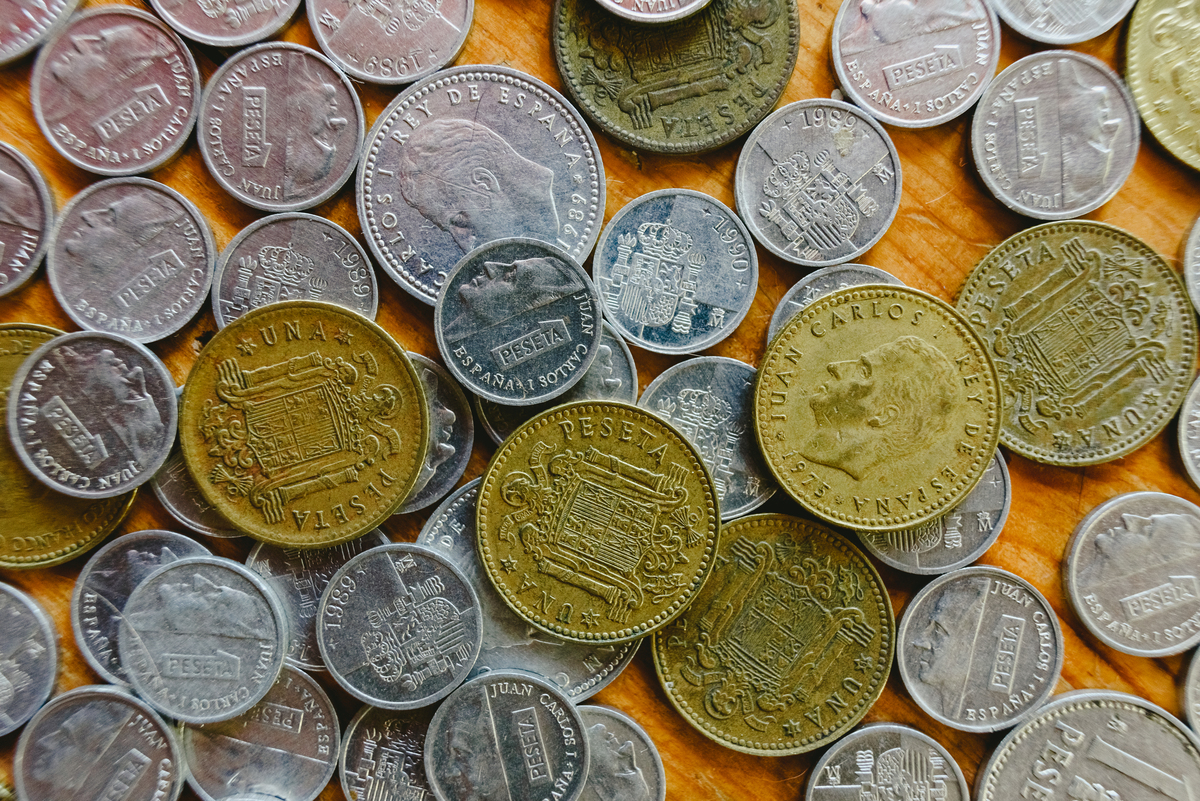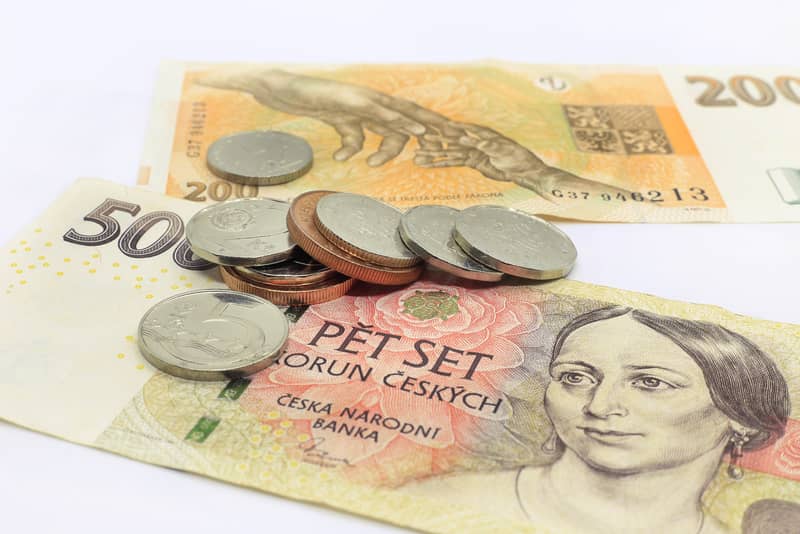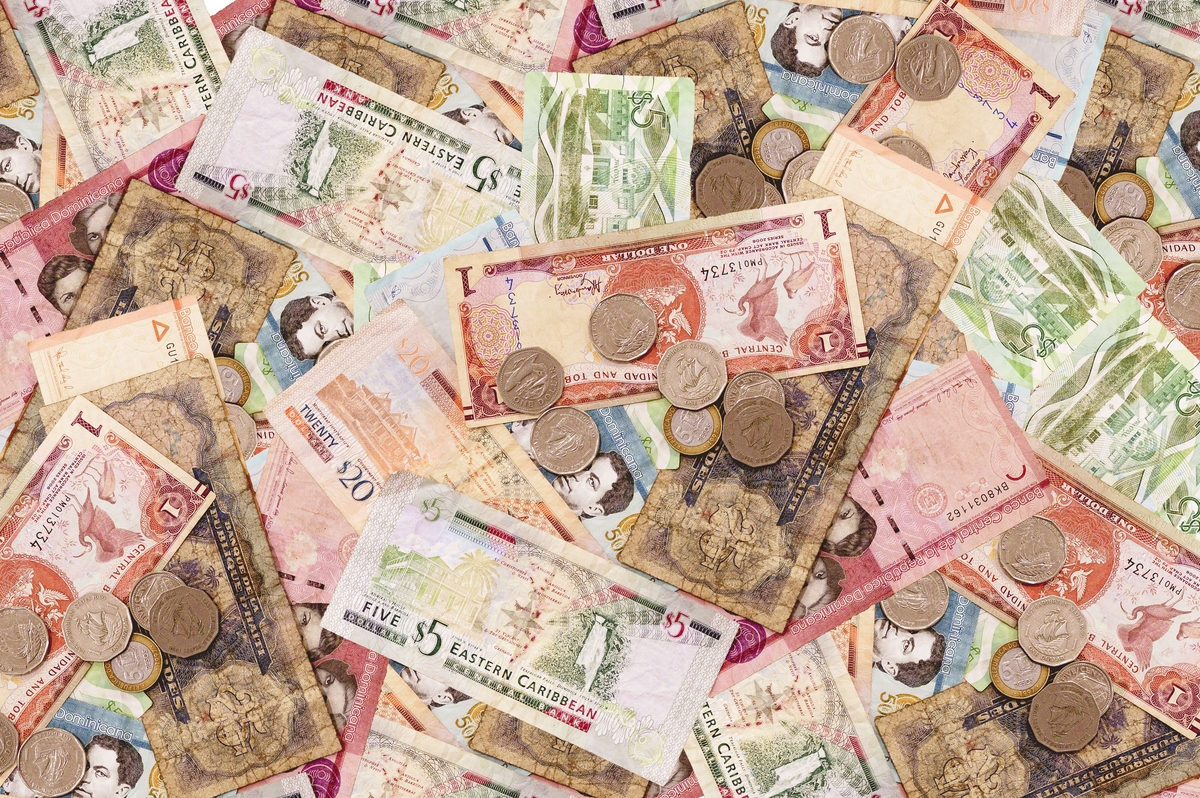Foreign Currency Collector’s Guide: Appraising Old Coins and Bills
Whether you trade paper money, hunt for rare currency, or collect old dollar bills picked up during your travels, one thing never changes: every note and coin has a story, and every story has a value. Experienced collectors can often estimate a piece’s market value with a quick look at the serial number, condition, and issuing authority. Newer collectors, especially when dealing with foreign paper money or exotic currencies, may not feel as confident.
The good news is that the same fundamentals used in the United States also apply to foreign currencies. Once you understand how collectible value is determined, how grading works, and where to go for expert appraisals, you can approach any piece with confidence. This guide brings those principles together so collectors, foreign currency collectors, and coin collecting enthusiasts have a clear, dependable reference.
How Value Is Defined

First, we should note that the value of collectible foreign currency has nothing to do with foreign currency exchange rates or determining the value of a currency in circulation, unless you are collecting coins and paper money that is still in use. If a note or coin is still in circulation, its value tracks the foreign exchange rate.
In such cases, you can quickly determine the value against the US dollar by using an online currency converter to check live rates at any given moment. But the moment a currency becomes obsolete, the process changes. Obsolete banknotes of foreign currencies, such as Japanese currency from the Edo period, German marks from the Weimar Republic, and Civil War or World War II issues, are valued by numismatic standards, not banking standards.
Numismatics breaks value into four categories:
1. Catalog value
This is the average listed value found in numismatic catalogs and guides like the Standard Catalog of World Coins. It reflects typical market behavior and serves as the baseline most collectors use.
2. Buy price
The amount a dealer is willing to pay you. Coin dealers buy at wholesale margins, so the buy price sits below retail.
3. Retail value
The price a dealer offers to the public. This often reflects market trends, demand spikes, and inventory levels.
4. Wholesale value
The price dealers use when trading among themselves or offering bulk discounts.
For most collectors, the goal is to identify a fair-market value. That number sits between wholesale and retail and reflects what the open market would reasonably pay at a coin auction, through numismatic platforms, or via reputable auction houses.
3 Key Factors That Determine Collectible Currency Value

Across the United States market and the global collecting community, collectible coin and paper money value comes down to three primary elements: rarity, condition, and demand, and in the case of coins, sometimes its metal content.
1. Rarity
Rarity reflects how many pieces were made and how many survived. It is based on the number of items originally produced and how many still exist. A note issued by a colonial mint, a fragment of fractional currency, or a surviving issue of Confederate Bills could be rare if production numbers were low or destruction was common. But age alone does not guarantee value.
For example, many collectors are surprised to learn that certain Weimar Republic German marks, despite being nearly a century old, hold modest value because they were printed in enormous quantities during hyperinflation. On the other hand, some Legal Tender Notes, Gold certificates, and obsolete bank notes can be worth far more because surviving populations are small.
Ready to sell?
Are you ready to sell your currency? Stop waiting and request a Shipping Kit. We will provide everything you need to ship and receive funds for currencies you own.
2. Condition (Grading)
Condition refers to the physical state of the currency, with higher grades always commanding better prices. Coin grading and note grading are standardized through different scales and professional organizations such as the American Numismatic Association, the International Bank Note Society, and third-party grading services. However, the principle remains the same – the better the condition a bill or coin is in, the more value it has.
Grades range from “poor” to “mint state” or “uncirculated.” Even a small crease in paper money or a minor surface mark on a coin can shift value dramatically. Because grading is detailed and sometimes subjective, collectors often use certified grading services for high-value pieces. It's one of the most controversial aspects of money collecting, precisely because small details can play such a large role.
If you want to learn more about how to grade coins or paper money, you can use numismatic resources like:
- The American Numismatic Association, which provides a good coin grading guide
- The International Bank Note Society's useful guide on grading notes
- Or PMG's World Price Guide
2. Condition (Grading)
Condition refers to the physical state of the currency, with higher grades always commanding better prices. Coin grading and note grading are standardized through different scales and professional organizations such as the American Numismatic Association, the International Bank Note Society, and third-party grading services. However, the principle remains the same – the better the condition a bill or coin is in, the more value it has.
Grades range from “poor” to “mint state” or “uncirculated.” Even a small crease in paper money or a minor surface mark on a coin can shift value dramatically. Because grading is detailed and sometimes subjective, collectors often use certified grading services for high-value pieces. It's one of the most controversial aspects of money collecting, precisely because small details can play such a large role.
If you want to learn more about how to grade coins or paper money, you can use numismatic resources like:
- The American Numismatic Association, which provides a good coin grading guide
- The International Bank Note Society's useful guide on grading notes
- Or PMG's World Price Guide
Mostly yes, but with a key difference. Coins and paper money can be appraised by many of the same professionals, but paper money grading is more delicate and relies on different criteria. Coins rely more on coin grading details like strike, luster, and surface marks.
Paper money relies more on paper quality, folds, margins, variations in serial numbers, ink quality, and the security measures used at the time of printing. So you can start with the same types of professionals, but always choose one who works with banknotes, not just coins.
What Kind of Appraisal Do You Need?
• Retail value if you plan to buy
• Fair-market value if you plan to sell or need documentation
• Fair-market value for estate, insurance, or legal matters
Appraisal Photo & Measurement Checklist (copyable)
Most appraisers will offer an initial opinion based on photos before you commit to a full paid appraisal. Here's a quick guide to save you time:
- Two full-frame photos: front and back, flat and shadow-free.
- Close-ups of: serial numbers, signatures, any overprint/notes, watermark area (hold to light), UV/IR features if present.
- For coins: obverse, reverse, edge (reeded/plain), any mintmarks, and a scale reference (ruler or coin of known size).
- Measurements: note weight (g), diameter (mm), and thickness if possible.
- Environment notes: humidity/temp, storage medium, and provenance or how/where it was acquired.
Share this set with an appraiser — it speeds up accurate preliminary estimates.
Notable Examples of Collectible Currency Worth Evaluating
Here are a few categories that collectors should keep an eye on:
1. Silver Certificates (U.S.)
Early-series Silver Certificates—especially the 1928, 1934, and 1953 issues—can be surprisingly valuable depending on condition, star notes, and printing anomalies. Collectors love them because they were once redeemable for physical silver, giving them a unique place in U.S. monetary history.
2. Pre-Euro European Notes & Coins
Currencies like the German Deutsche Mark, French Franc, or Italian Lira often carry strong nostalgia value. High-grade commemorative issues, limited-mintage coins, or early post-war notes can exceed face value significantly. Some are still redeemable at national central banks, which adds another twist to their value.
3. Hyperinflation-Era Currency
Zimbabwe’s 100 trillion dollar note or Yugoslavia’s 500 billion dinar note are iconic examples. Their fascination lies both in history and extreme denominations. High-grade notes, especially uncirculated sheets, can fetch strong premiums.
4. Error Notes & Misprints
Currency printing errors—misaligned seals, inverted serial numbers, missing overprints, or dramatic cutting mistakes—are often far more valuable because they are unintended and scarce. Even modern notes can hold significant value if the error is major and well-documented.
5. Early Polymer Banknotes
Countries like Australia, Canada, and Romania led early polymer note production. First-issue polymer notes, small-run commemoratives, and pristine examples of early designs are gaining collector traction as polymer becomes a global standard.
6. Confederate States of America Notes (CSA)
While many CSA notes were printed on low-quality paper, certain plates, engraved signatures, and scarce issues are genuinely valuable. Provenance matters greatly here—authenticity can dramatically shift pricing.
7. U.S. Large Size Notes (1860s–1920s)
“Horse Blanket” notes, such as Legal Tender Notes, Silver Certificates, Gold Certificates, and National Bank Notes, are consistently strong collectibles. Famous designs like the “Educational Series” (1896) or “Bison Note” (1901) are especially desirable.
8. High-Denomination Notes (Though Withdrawn)
U.S. $500, $1,000, $5,000, and $10,000 bills, withdrawn from circulation in 1969, command high prices, even in mid-grade condition. Many were destroyed, so survivors are scarce.
9. Commemorative Proof & Specimen Sets
Limited-edition sets such as proof coins issued by central banks (Bank of England, Royal Canadian Mint, Banco de México, etc.) often appreciate due to small mintages, special packaging, and premium manufacturing quality.
10. Ancient and Medieval Coinage with Strong Provenance
Roman denarii, Byzantine solidus coins, or medieval European groschen can carry strong market value—especially when authenticated and accompanied by a clear chain of ownership or archaeological context. Condition, rarity, and historical importance heavily influence pricing.
Each of these can carry significant value depending on rarity and condition.
How to Protect, Preserve & Maximize the Value of Your Currency Collection
Whether you collect foreign banknotes, world coins, obsolete currency, or rare historical pieces, long-term value depends on more than rarity and demand. Proper storage, careful handling, and documented provenance can dramatically increase what your collection is worth years down the line. Here are practical tips to ensure every piece remains in its best possible condition — and retains maximum value over time.
1. Build Strong Provenance (Ownership History)
Provenance (the documented history of an item’s ownership) can add significant value, reassuring buyers that a piece is authentic, properly stored, and legitimately acquired. Strong provenance can elevate both desirability and price potential.
- Keep receipts, invoices, auction listings, and catalog records.
- Save any emails or correspondence from sellers or prior owners.
- Photograph old labels, dealer codes, envelopes, stamps, or any marks related to ownership.
- Preserve original storage materials for documentation, even if you rehouse the item.
2. Use Proper, Archival-Quality Storage
Currency is extremely sensitive to environmental factors. Archival storage keeps deterioration to a minimum and helps maintain the highest grade possible.
Best practices for paper money:
- Store in acid-free, PVC-free Mylar or polyester sleeves.
- Keep completely flat, never folded.
- Avoid albums made with questionable plastics or adhesives.
Best practices for coins:
- Use inert capsules, 2x2 archival flips, or airtight holders.
- Avoid PVC coin flips (they release chemicals that cause green spotting).
- Store proof or high-grade coins in capsules to prevent hairlines and abrasions.
3. Control Environment: Humidity, Temperature, and Light
Environmental damage is one of the biggest value-killers.
- Maintain low humidity (ideal: 30–50%). Add silica gel packs where needed.
- Keep the temperature stable, avoiding basements or attics.
- Protect from direct sunlight, which fades banknotes and toning.
- Avoid storing currency near heat, magnets, or chemical vapors.
Even slight fading, yellowing, or humidity rippling can drop a note’s grade — and value — dramatically.
4. Handle with Care
Because a single crease, fingerprint, or scratch can instantly downgrade a piece, handling matters just as much as storage.
- Wash and dry hands before handling; for better protection, use nitrile or cotton gloves.
- Hold banknotes by the edges; avoid applying pressure or bending.
- Handle coins by the rims only, never the faces.
- Use a soft, clean surface when examining or photographing pieces.
This is especially important for high-value items where grading companies look for microscopic flaws.
5. Inspect and Maintain Your Collection Periodically
Conditions change over time, so a check-in schedule protects long-term value.
- Review items once or twice a year.
- Replace sleeves that show yellowing, stickiness, or warping.
- Check silica gel packets and regenerate as needed.
- Look for early signs of paper acidity, mold, or PVC damage on coins.
- Update values and provenance sheets when new information becomes available.
Small maintenance actions prevent large (and irreversible) damage later.
6. Consider Professional Certification for High-Value Pieces
When an item is rare, historically significant, or potentially worth hundreds or thousands, professional certification can increase trust and value.
Certified items:
✔ sell faster
✔ sell for more
✔ face fewer authenticity disputes
✔ come with permanent ID numbers for better traceability
Buying Modern or Exotic Foreign Currency for Future Collectibility

Some collectors like to buy crisp, uncirculated modern notes with an eye toward future value. Collecting early issues of new designs, short production runs, and limited-circulation exotic currencies can pay off decades later when notes become scarce.
As always, store notes carefully, handle them with gloves, and avoid folds or pressure marks. Pristine notes hold their value far better than circulated ones. You can learn more about circulated vs. uncirculated bills in another article.
Your Next Steps as a Currency Collector
Whether you are acquiring foreign currencies for a growing collection, learning to evaluate obsolete banknotes, or researching rare paper money for investment, the principles above give you a solid foundation. Lean on numismatic platforms, join coin clubs, compare prices across dealers, and stay connected with professional organizations. And when in doubt, a certified appraisal can protect you from underselling or overpaying.
If you wish to buy foreign bills that are still in use, but you predict may become collectible at some point in the future, you can order foreign currency of your choice online at US First Exchange at competitive exchange rates. We deliver clean, crisp, high-grade notes that you can preserve until they have numismatic value.
Choose your favorite, request a shipping kit, and get foreign currency delivered to your door within 24-48 hours. You'll receive a tracking number so you know where your shipment is at all times, and you can also opt for insured shipping for additional peace of mind.
Ready to buy?
Are you ready to buy your currency? Stop waiting and request a Shipping Kit. We will provide everything you need to ship and receive funds for currencies you own.


